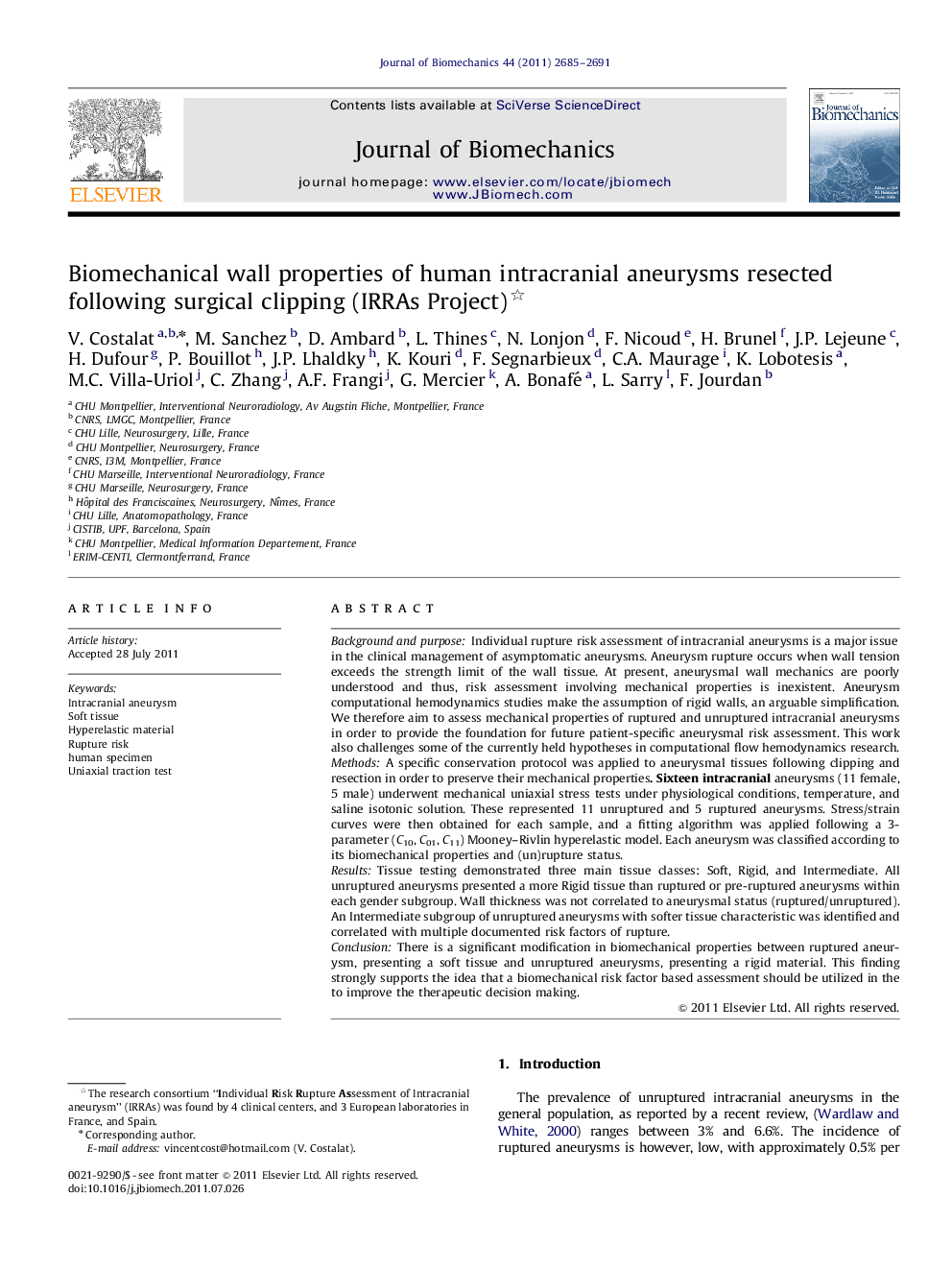| Article ID | Journal | Published Year | Pages | File Type |
|---|---|---|---|---|
| 872501 | Journal of Biomechanics | 2011 | 7 Pages |
Background and purposeIndividual rupture risk assessment of intracranial aneurysms is a major issue in the clinical management of asymptomatic aneurysms. Aneurysm rupture occurs when wall tension exceeds the strength limit of the wall tissue. At present, aneurysmal wall mechanics are poorly understood and thus, risk assessment involving mechanical properties is inexistent. Aneurysm computational hemodynamics studies make the assumption of rigid walls, an arguable simplification. We therefore aim to assess mechanical properties of ruptured and unruptured intracranial aneurysms in order to provide the foundation for future patient-specific aneurysmal risk assessment. This work also challenges some of the currently held hypotheses in computational flow hemodynamics research.MethodsA specific conservation protocol was applied to aneurysmal tissues following clipping and resection in order to preserve their mechanical properties. Sixteen intracranial aneurysms (11 female, 5 male) underwent mechanical uniaxial stress tests under physiological conditions, temperature, and saline isotonic solution. These represented 11 unruptured and 5 ruptured aneurysms. Stress/strain curves were then obtained for each sample, and a fitting algorithm was applied following a 3-parameter (C10, C01, C11) Mooney–Rivlin hyperelastic model. Each aneurysm was classified according to its biomechanical properties and (un)rupture status.ResultsTissue testing demonstrated three main tissue classes: Soft, Rigid, and Intermediate. All unruptured aneurysms presented a more Rigid tissue than ruptured or pre-ruptured aneurysms within each gender subgroup. Wall thickness was not correlated to aneurysmal status (ruptured/unruptured). An Intermediate subgroup of unruptured aneurysms with softer tissue characteristic was identified and correlated with multiple documented risk factors of rupture.ConclusionThere is a significant modification in biomechanical properties between ruptured aneurysm, presenting a soft tissue and unruptured aneurysms, presenting a rigid material. This finding strongly supports the idea that a biomechanical risk factor based assessment should be utilized in the to improve the therapeutic decision making.
